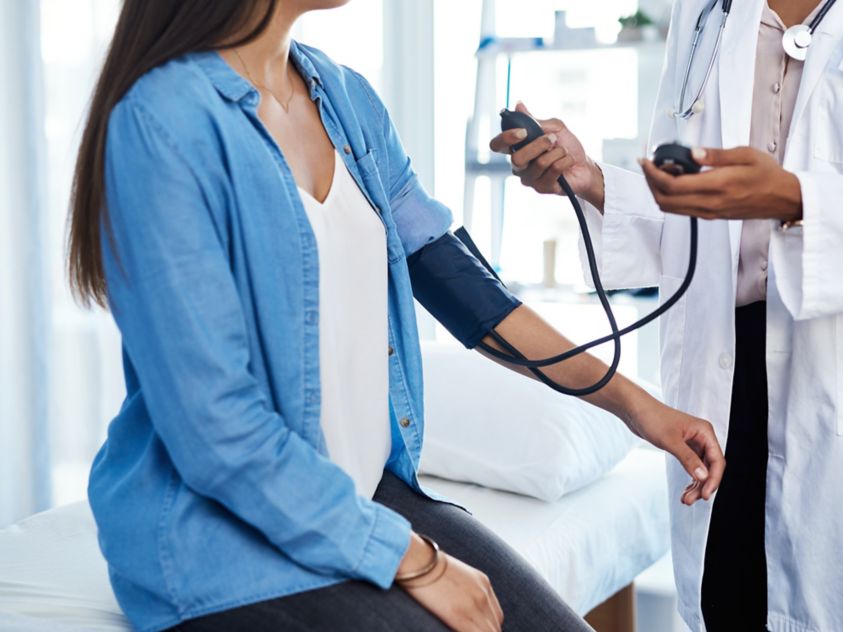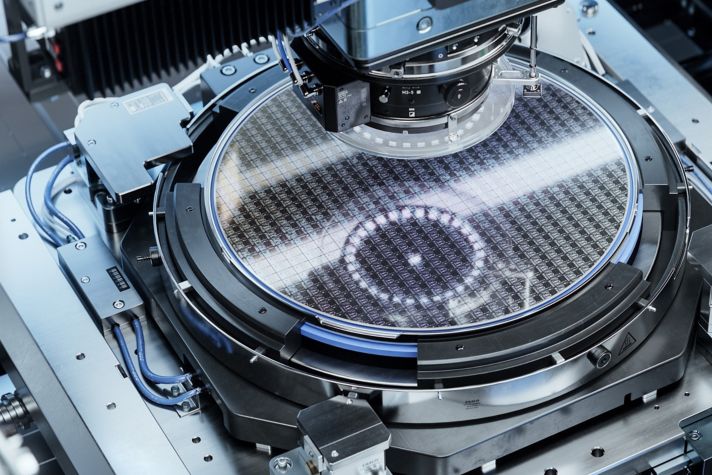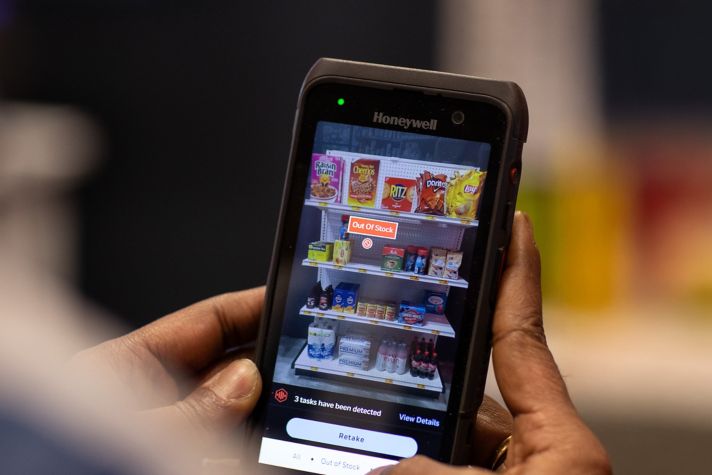Worldwide medical equipment market growing
Across hospitals in the U.S., an estimated 10-15 million pieces of medical equipment are in use today.1 Healthcare facilities have a significant (and growing) number of connected medical devices per patient bed, driving original equipment manufacturers (OEMs) to make equipment smaller and smaller.2 As the population ages and healthcare demand continues to increase, the medical device market will continue to grow in the coming years; it is projected to expand at a compound annual growth rate (CAGR) of 5.5% from 2022-2029, reaching $700+ billion globally by 2029.3
One of the key components to medical equipment like ventilators, portable oxygen concentrators, blood pressure monitors, lab equipment, and infusion pumps is a pressure sensor. In a ventilator, for example, these critical sensors help monitor patient breathing, control the flow of oxygen delivered to the patient, detect if breathing deteriorates and flag when air and oxygen inlet filters are clogged.
Selecting the pressure sensor that will best meet the needs of the specific medical device—whether it’s pulmonary care equipment in the hospital setting or a blood pressure cuff at the local drug store—is vital to the performance and required price-point of the equipment.
The most important questions to ask during sensor selection
So what are the key questions to ask to narrow down the type of pressure sensor needed for a specific medical application? We have outlined several to get you started:
1. What pressure range is required?
Pressure ranges vary widely, from an ultra-low pressure below 1 pound-per-square-inch (PSI) all the way up to the 150 PSI range, which is typically the upper limit for medical equipment. The closer the pressure range of the sensor matches the needs of the medical equipment, the more accurate the equipment will be. Honeywell offers up to 56 different pressure ranges in our selection of board mount pressure sensors, allowing us to meet the needs of a variety of types of medical equipment.
2. What pressure type is needed?
There are four different pressure types: (1) Absolute Pressure/Vacuum, (2) Gauge Pressure, (3) Differential Pressure (sometimes referred to as Compound Ranges), and (4) Seal Gauge.
Absolute pressure measures altitude and barometric pressure changes, whereas gauge pressure refers to atmospheric pressure and is independent of altitude. Differential pressure is often used when there is a filter involved to measure across the filter element. Seal gauge is the least common type of pressure for medical equipment and is used when there are concerns about media egress into the sensor.
3. What is the output type?
There are five common output types to consider: (1) Analog Unamplified, Millivolt (mV) Output, where the OEM does the amplification and calibration themselves, (2) Analog Amplified Voltage (Vdc) Output, (3) Digital Output, (4) Pulse with Modulation, and (5) Current Output.
Unamplified millivolt output is used when the OEM wants to have control over the exact range of the sensor. Analog amplified voltage output is typically used when the voltage needs are between .5 Volts and 4.5 Volts. Analog sensors are still popular today despite the move toward digital outputs because many pieces of medical equipment use older designs that have been approved by the FDA and do not yet need a full redesign.
Digital outputs are becoming more common—an example is I2C SPI (Inter-Integrated Circuit Serial Peripheral Interface).4 Digital options are better at going distances, have better signal integrity, and are less impacted by noise.
4. What is the media used?
The media used could be air or other gases, a benign liquid (such as saline or water) when the equipment comes into contact with condensation, silicone gel, or fluorosilicone gel. Fluorosilicone gel is seen mostly with harsher-duty applications outside of healthcare.
5. What is the package style?
There are many different packaging types to choose from, including Single In-Line Package (SIP), Dual In-Line Package (DIP), Leaded Surface-Mount Technology (SMT), Flying Leads, and more.5 The variety of package styles that Honeywell’s pressure sensors can accommodate is a significant advantage to the medical OEMs we work with. The number of options we have gives enhanced flexibility to design engineers, making it easier for them to design these vital sensors into their products.
6. All about ports – how many are needed, what is the type, and what is the orientation?
Most medical equipment needs sensors with either 1 or 2 ports. The orientation can be either axial or radial. Port type could be O-Ring or Tubing. The number and type of ports can ultimately impact the size of the medical equipment. The variety of port styles Honeywell pressure sensors can accommodate is another key differentiator of our sensing solutions.
7. What accuracy level and total error band (TEB) is required?
Different types of medical equipment require different accuracy levels in their pressure sensors, ranging from ±0.25 % full scale span (FSS) up to ±5 % FSS. TEB is a calculation used to determine how a sensor will perform within a system. It measures the combination of all possible errors within the measurement and operating temperature range.6 Some equipment, like critical care hospital equipment, requires lower TEB and higher accuracy, whereas take-home devices, like oxygen concentrators and insulin pumps, can have a slightly higher TEB.
Learn more
Whether you are designing a large piece of equipment for the emergency room or a wearable medical device for home healthcare, Honeywell has the engineering expertise and sensing portfolio you need. Contact us if you’d like more information on our pressure sensing capabilities.
Sources
- www.fiercehealthcare.com/tech/82-healthcare-organizations-have-experienced-iot-focused-cyber-attack-survey-finds
- https://hitinfrastructure.com/news/iot-sensors-critical-to-successful-health-it-infrastructure
- www.fortunebusinessinsights.com/industry-reports/medical-devices-market-100085
- www.techplayon.com/communicate-digital-devices-like-sensors-adc-dac-iot-i2c-spi-protocols/
- https://en.wikipedia.org/wiki/List_of_integrated_circuit_packaging_types
- www.digikey.com/en/articles/understanding-and-using-total-error-band-in-sensor-selection#:~:text=Total%20error%20band%20(TEB)%20is,of%20measurements%20and%20operating%20temperatures






